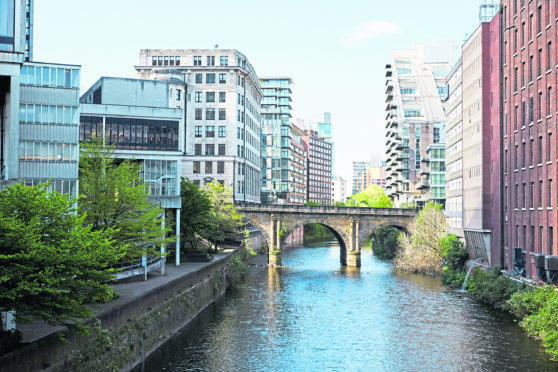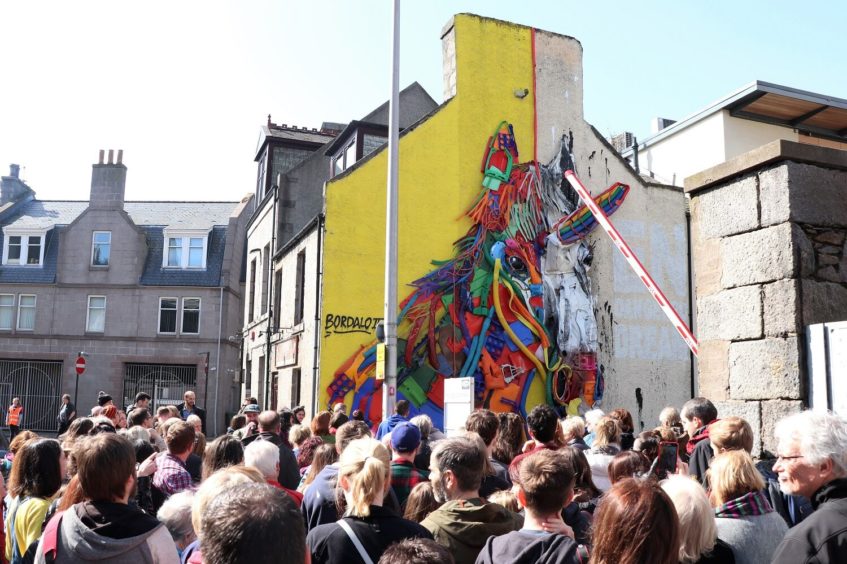When it comes to making cities an attractive place to live in or visit, image can be everything.
This week the Press and Journal has been exploring how Manchester’s regeneration in recent decades has acted as an unofficial blueprint for civic leaders in Aberdeen hoping to breathe new life into the city.
Major infrastructure projects have been been mapped out as part of a 25-year masterplan to revive the beleaguered heart of Aberdeen.
But tourism and business leaders in Manchester have said that building a new image for the Granite City, previously reliant on the North Sea fishing and oil and gas for prosperity, could be just as important.
The English city has transformed how people view it, undergoing a remarkable transformation from the post-industrial dereliction of the 1980s to a gleaming tourist Mecca today.
Chris Fletcher, marketing and campaigns director at Greater Manchester Chamber of Commerce, speaking from the Morrissey room of their headquarters, offered his thoughts on how Aberdeen could reinvent itself.
Mr Fletcher said: “There has been so much change in the last 20 to 25 years but, despite that, I still think Manchester has kept its soul through the process.
“The image of Manchester as post-industrial is interesting because, while we have seen all this change, we still have some of the most deprived communities in the UK sitting side by side with all this new regeneration.”
Mr Fletcher also outlined the importance of seeking to establish new key industries following the decline of traditional major employers.
He said: “In diversifying you have to also look at the supply chains, see how you can transfer skill sets into other industries.
>> Keep up to date with the latest news with The P&J newsletter
“I’m not saying that in Aberdeen you could turn a petroleum or mechanical engineer into a basket weaver but you need to look at ways to adapt to change.
“I think you need to start doing this before industries close rather than after, one thing we are looking at is the low carbon agenda, which is not only good for the planet but provides great business opportunities.”
Ways in which Aberdeen has attempted to brighten up its image in the recent past include establishing a comedy festival, the Spectra lights displays, creating a Christmas village each December and even bringing sporting events into the centre like the Great Aberdeen Run and Tour Series cycling competition.
The most eye-catching scheme has been the incredibly popular Nuart initiative, which has invited artists from all over the world to paint large-scale designs onto buildings in the city centre.
Nick Brook-Sykes, director of tourism at Marketing Manchester and vice-chairman of the Tourism Alliance, spoke about the potential for such schemes to “totally transform” communities.
He said: “I’ve been here about 30 years and the place is unrecognisable from what it was, the city has been totally transformed.
“This idea of all agencies working together for the benefit of the city under a common purpose has been vitally important.
“Two decades ago, nobody lived in the city, now you can hardly count the cranes on the horizon.
“Manchester is a city that is big enough to make a noise on the national stage and be listened to but small enough where you can get things done.
“It hasn’t happened overnight, it’s been all about changing perceptions and what people think they know about a place – and I suppose Aberdeen is the same.
“People think Manchester is a post-industrial, football city and Aberdeen is an oil and gas city and our strategy here has been to show it is so much more.”


